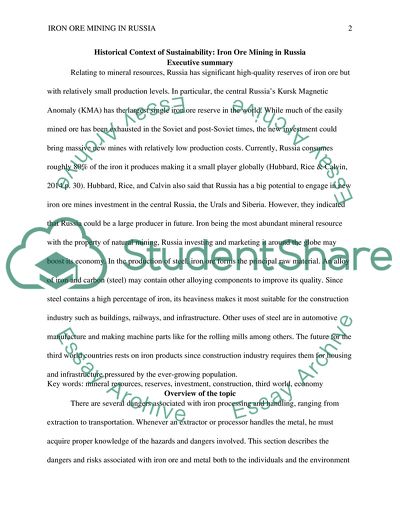Cite this document
(Historical Context of Sustainability: Iron Ore Mining in Russia Coursework, n.d.)
Historical Context of Sustainability: Iron Ore Mining in Russia Coursework. Retrieved from https://studentshare.org/engineering-and-construction/1869202-the-historical-context-of-sustainability-production-of-iron-ore-in-russia
Historical Context of Sustainability: Iron Ore Mining in Russia Coursework. Retrieved from https://studentshare.org/engineering-and-construction/1869202-the-historical-context-of-sustainability-production-of-iron-ore-in-russia
(Historical Context of Sustainability: Iron Ore Mining in Russia Coursework)
Historical Context of Sustainability: Iron Ore Mining in Russia Coursework. https://studentshare.org/engineering-and-construction/1869202-the-historical-context-of-sustainability-production-of-iron-ore-in-russia.
Historical Context of Sustainability: Iron Ore Mining in Russia Coursework. https://studentshare.org/engineering-and-construction/1869202-the-historical-context-of-sustainability-production-of-iron-ore-in-russia.
“Historical Context of Sustainability: Iron Ore Mining in Russia Coursework”, n.d. https://studentshare.org/engineering-and-construction/1869202-the-historical-context-of-sustainability-production-of-iron-ore-in-russia.


